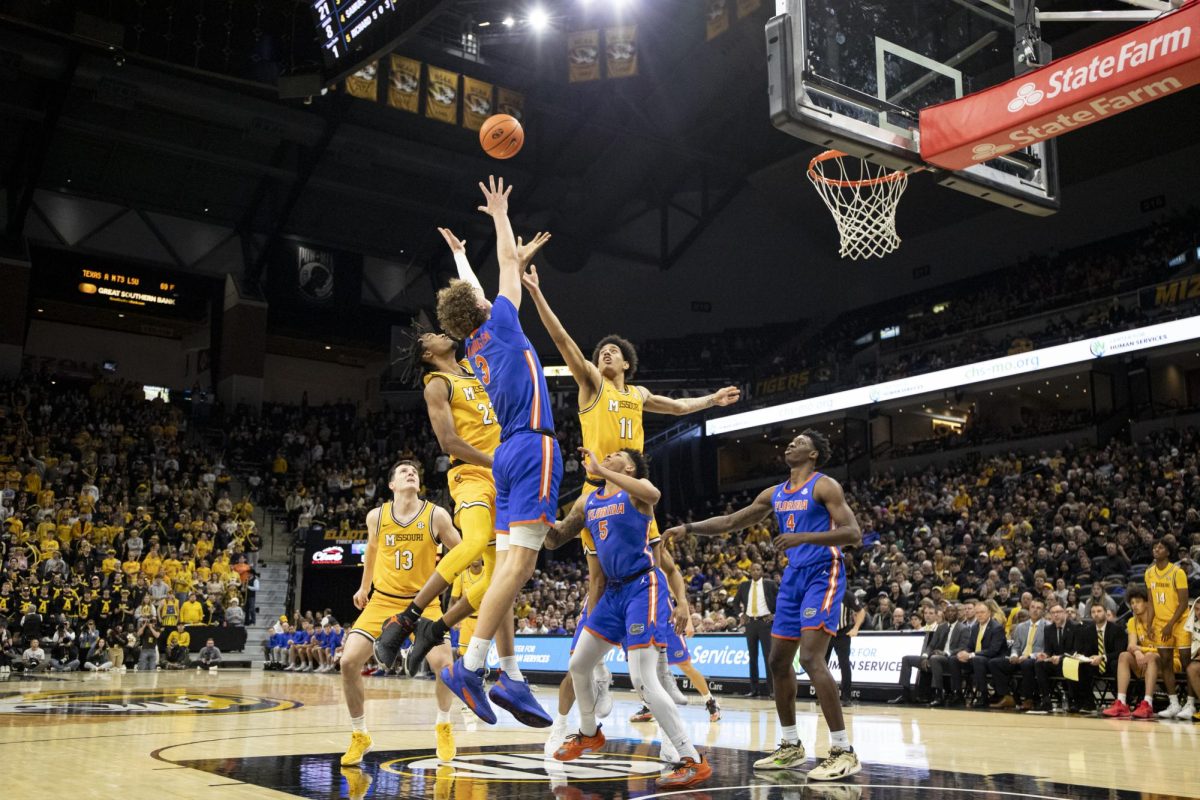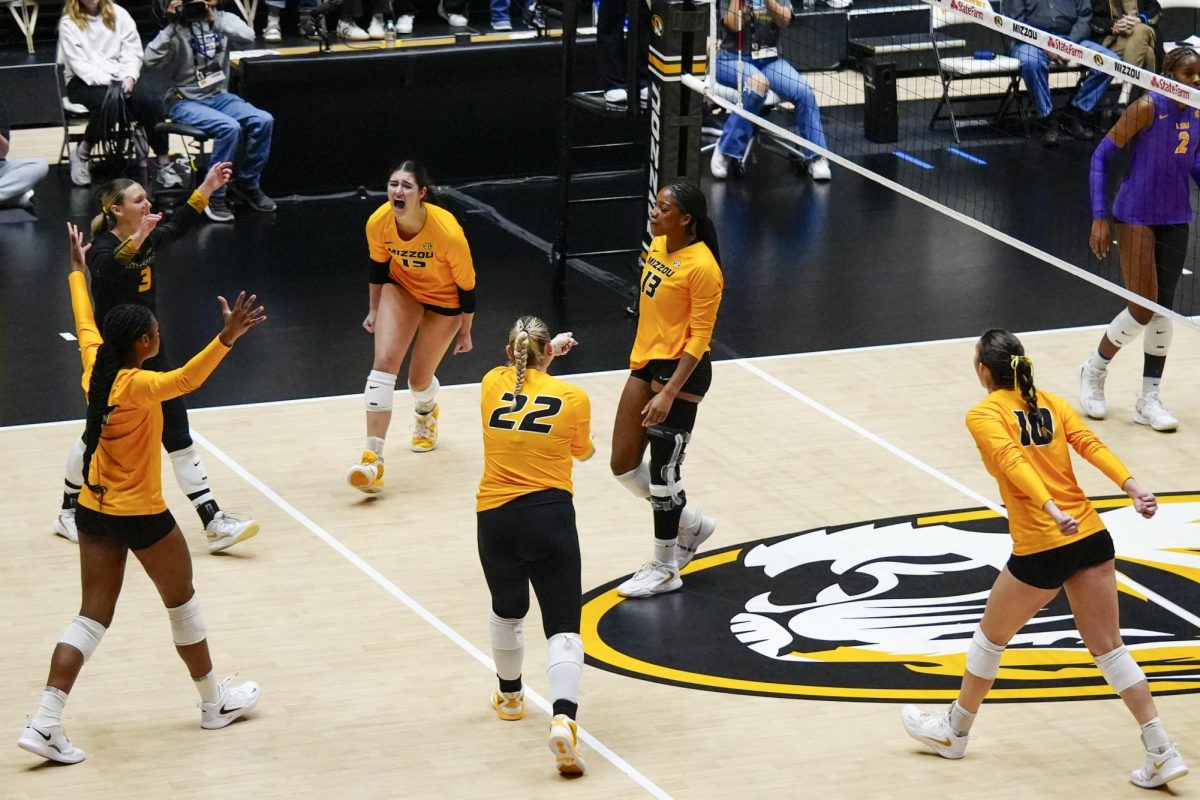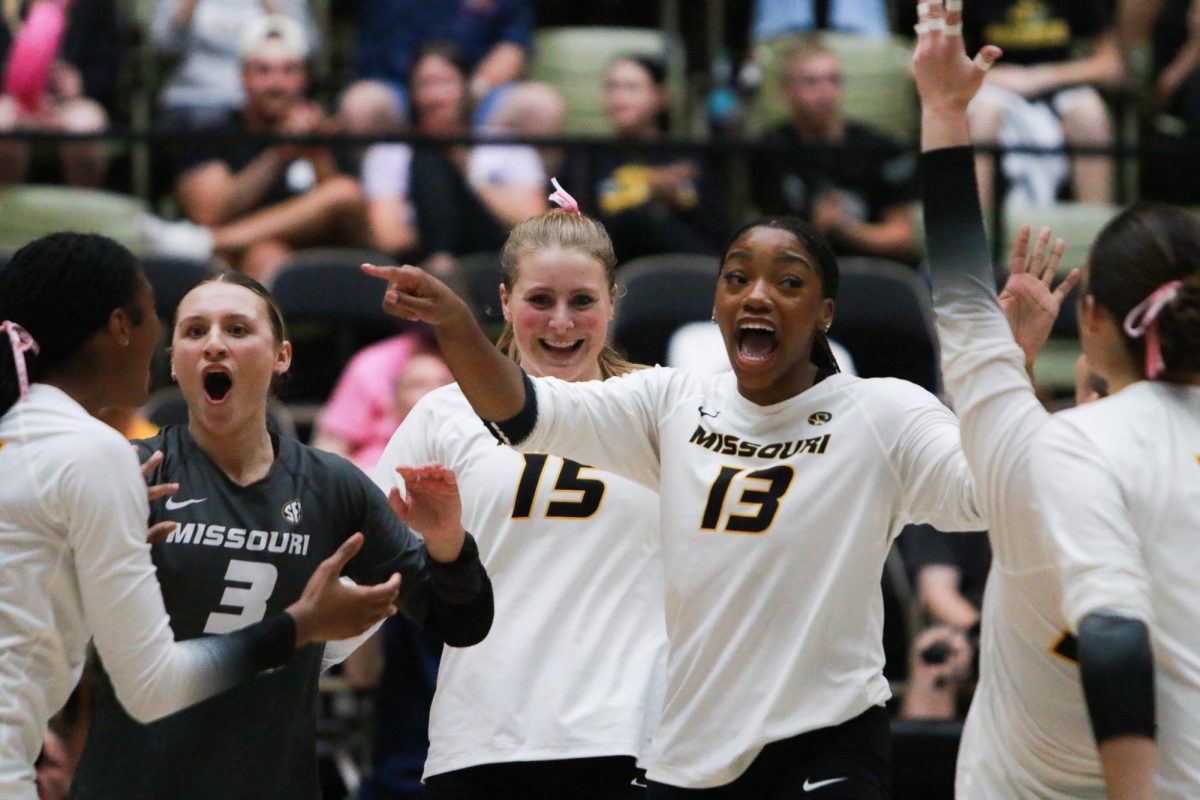Over the last year, the college basketball world (and the rest of the world) has been flipped on its head in the midst of the pandemic. However, one of the few things that has remained the same for the 2020-21 season is the Missouri men’s basketball roster.
Coach Cuonzo Martin’s team is largely intact after finishing 15-16 last season, and several familiar faces are sticking around for another year.
It’s worth taking a look at what these players did right and wrong down the stretch as well as some points of emphasis before the season tips off Wednesday against Oral Roberts at Mizzou Arena.
###Experience###
Between 2019-20 and 2020-21, Missouri brought in two transfers and just one true freshman. Everyone else is a returning player, most of whom played critical minutes over the course of the season.
Xavier Pinson, Mitchell Smith and Jeremiah Tilmon all flirted with going pro this offseason by declaring for the NBA Draft, but the trio eventually returned to Columbia. The squad is healthy to start the season after Tilmon and guard Mark Smith lost time last year with foot and ankle injuries, respectively. Add in Drew Buggs, a graduate transfer guard from Hawaii, and Missouri has several players who have at least one year of college experience under their belt.
Forward Reed Nikko is the only player who started a game for the Tigers last season and left. Eight players who started at least one game last year return with more experience under their belt, and 88% of the scoring production is back.
Guard Dru Smith was the team’s everything man a year ago, leading the team in points per game and pacing the Southeastern Conference with 2.1 steals per contest. He is back, and his projections for this season were worthy of a Preseason Second Team All-SEC nod from the coaches and media panels.
Pinson began the season off the bench before transitioning into a starting role during SEC play. He earned a starting role halfway through SEC play and ended the season by scoring at least 15 points in seven of the final nine games. As a result, Pinson is projected to fill a bigger role when this season begins.
When Cuonzo Martin gave significant playing time to the players who returned this year, it paid dividends. Missouri fielded 11 starting lineups that included five players who returned for 2020-21 and went 7-4 in those games.
The question is how much the team’s knowledge of the college game matters. Despite the combined experience between the standout players, a panel of media members predicted the Tigers will finish 10th in the 14-team SEC field, and they face a number of younger, more talented players throughout the season.
Missouri will play against eight teams who signed a top 50 recruit from the 2020 class, and the fresh faces dispersed around SEC teams could render Missouri’s wealth of experience a moot point.
###3-point shooting###
One of the most glaring problems the Tigers tried to rectify this offseason is the dip in 3-point shooting efficiency.
Missouri’s 3-point shooting percentage fell six points between the 2018-19 and 2019-20 season. The team’s perimeter shooting clip slipped below 30%, which ranked No. 329 out of 353 Division I schools.
Poor shooting performances contributed to most of the losses from last season, and they came more often than not. Missouri shot less than 30% a whopping 19 times in 2019-20, and its record was 7-12 in those games. One such performance was a dismal 4 of 26 showing from beyond the arc in a 68-60 loss against Charleston Southern.
Conversely, when they broke the 30% 3-point shooting mark, the Tigers were 8-4.
Martin has dedicated more time this offseason to working on shooting drills to improve their long-range shooting fortunes. According to CJ Moore from The Athletic, the team participates in shooting drills three times per week and is focusing on guard penetration and kicking the ball out for a teammate to catch and shoot.
Some players can individually shift the 3-point percentage in the right direction. A healthy Mark Smith, who shot 45% on 3’s in 2018-2019, could provide a vital scoring spark if he returns to form. The program also added junior college transfer Ed Chang, who shot better than any player on Missouri’s roster at 41.4%, albeit at a lower level of competition.
The perimeter shooting overhaul cannot rest solely on the shoulders of Mark Smith and Chang though. Everyone on the team must be more reliable behind the arc.
###Foul trouble###
From a points per game perspective, Missouri’s defense held its own last season. Its 65.2 points allowed per game ranked third-best among SEC teams and opponents shot 41% from the field against the Tigers last season, which was also third-best in the conference.
However, fouling issues were the Tigers’ Achilles’ heel last season and cost them many points at the free-throw line.
Missouri committed 21.2 fouls per game while their opponents averaged 24.5 free throw attempts per contest last year. The Tigers ranked No. 343 in the nation in both categories.
The impact of Missouri’s fouling seeped into the scoreline. In 11 games where the Tigers fouled above their season average, they allowed more points than their average in 10 of them.
There were also several close games that went against the Tigers where free throws were pivotal.
In its Feb. 11 clash against No. 25 LSU, Missouri outperformed its opponents in nearly every statistical category aside from free throws, where the Tigers allowed 21 more free throw attempts than they shot. Missouri lost 82-78.
On Nov. 12, Missouri lost to No. 21 Xavier 63-58 in overtime after losing the free throw attempt margin to the Musketeers by 12.
Moore reported that Martin has focused on moving feet on defense instead of reaching during offseason practices.
###Change of pace###
With a healthier lineup filled with experienced players, Martin said he wants to disperse the minutes and push the ball on the offensive end. This would be a new look from last season, where the Tigers attempted very few field goal attempts and allowed even fewer.
Last year’s squad was more keen on playing a half-court tempo and setting up plays in a 4-out, 1-in motion offense. This offense features four players stationed around the perimeter with one big man trying to get open on the low block or setting screens up top and rolling to the basket.
There’s a lot of movement, and the Tigers found success by playing the pick and roll game in this set by getting good looks close to the rim last season.
The Tigers used a lot of clock trying to create the best looks possible, and when they had chances to run in the open court off of long rebounds or steals, they slowed it down and allowed everyone on both teams to get back.
A fast pace is not necessary for success. A team’s level of offensive success lies in the quality of its shot attempts and how consistently those shots are made, which is where Missouri had difficulties last year.
If this year’s team wants to make a successful transition into an up-tempo offense, it needs to emphasize making quality shots just as much as pushing the ball. Missouri struggled to convert their looks from inside the arc, especially in conference play. Missouri made 46.3% of their 2-point attempts in conference play, six percentage points below their opponents mark.
Martin’s goal of spreading the minutes around to the nine players with starting experience at the Division I level and playing faster depends on the on-court performance of the rotating players and the roster’s health.
If all players produce at the top of their game, Martin’s stylistic switch could be seamless. His team would be able to take enough breaks in the game to still have gas left in the tank in the closing moments.
_Edited by Jack Soble | [email protected]_













